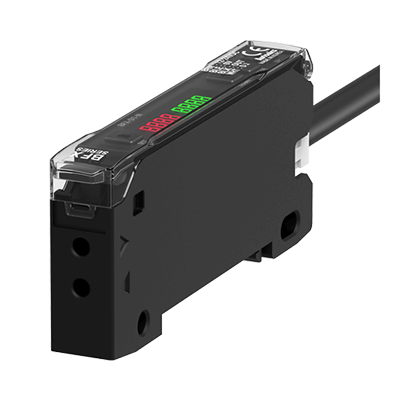What Is a Fiber Amplifier?

A Fiber Amplifier is an amplifier used to amplify optical signals.
When optical signals are propagated in an optical fiber, they are attenuated by transmission or distribution, and the amplifier compensates for this. Conventionally, optical signals are amplified electrically by a semiconductor IC, etc., then reconverted to light and re-transmitted.
Fiber Amplifiers, on the other hand, can amplify optical signals directly in optical fibers, and are widely used in the field of optical communications.
Applications of Fiber Amplifiers
Fiber Amplifiers (Optical Fiber Amplifiers) are widely used in the field of optical communication using optical fibers, especially for long-distance optical communication applications where attenuation of light during propagation inside the fiber is an issue.
Amplification of optical signals using rare-earth element-doped fiber, which is the mainstream, has high output power. It can also amplify optical signals with high modulation frequencies and wavelength multiplexing, which cannot be handled by electrical amplification using semiconductors, and thus can handle optical signals with large amounts of information.
Taking advantage of these characteristics, fiber amplifiers are used in long-distance relay systems, optical multi-distribution systems, and optical frequency multiplexing systems in optical communications.
Principle of Fiber Amplifier
Fiber Amplifiers (optical fiber amplifiers) are mainly composed of rare-earth doped fibers and pump laser diodes (pump LDs) and amplify optical signals by utilizing the physical phenomenon of induced emission.
When rare earth ions are excited by the pump LD, the input signal light is triggered and amplified as an optical signal without conversion to an electrical signal by induced emission. Other components include a WDM coupler to combine the input signal light and pump light, and an optical isolator to prevent the amplified light from oscillating.
Rare earth ions can be used for amplification in the 1.3μm band for Pr ions, the 1.5μm and 0.85μm bands for Er ions, the 1.4μm and 2μm bands for Tm ions, and the 1.0μm band for Yb ions, corresponding to their energy levels, especially in the 1.3μm, 1.4μm and 0.85μm bands. Fluoride fibers are used for amplification instead of quartz fibers.
Types of Fiber Amplifiers
1. Erbium-Doped Fiber Amplifier (EDFA)
Since quartz optical fibers for long-haul optical communications have a minimum loss at a wavelength of 1.55μm, long-haul optical communication transmission networks have been constructed using semiconductor lasers with wavelengths in this range as light sources. Long-haul optical communication transmission networks extend over several hundred kilometers in some cases, so the loss used to be converted from light to electrical signals, electrically amplified, and then converted back to light and injected into the optical fiber.
With the advent of erbium-doped Fiber Amplifiers (EDFAs), optical signals in the 1.55-μm band can be amplified as they are when used in combination with incident light from 0.98-μm and 1.48-μm pump laser diodes, and this has become the dominant technology in current long-distance optical communication systems.
2. Fiber Raman Amplifier (FRA)
In addition to erbium-doped optical fiber amplifiers, fiber Raman amplifiers (Fiber Amplifiers) are another type of fiber amplifier that has recently been attracting attention.
This technology is expected to be applied to wavelength-division multiplexed optical fiber communications (WDM) because it is a physical phenomenon with freely settable wavelengths and relatively broadband gain. However, the need for high-power excitation light is an issue. Manufacturers are working hard to develop the technology, including the technology to develop the laser light.
Other Information on Fiber Amplifiers
1. Development for Fiber Sensors
Products called Fiber Sensors, which consist of a Fiber Unit photoelectric sensor, and a Fiber Amplifier for detection in confined spaces, are also widely used mainly in industrial applications. Fiber sensors generally use pulse-modulated light and are capable of non-destructive inspection applications in confined spaces and color discrimination, and have high-speed response.
They can be used in sensor applications suitable for checking workpieces and emissions in high-temperature environments.
2. Fiber Amplifier for the Next Generation
In addition to the conventional 1.55μm (C-Band: 1.53 to 1.565μm) long-wavelength light source Fiber Amplifiers, the shorter wavelength O-band (1.26 to 1.36μm) and S-band (1.46 to 1.53μm) Fiber Amplifiers have recently attracted attention in order to meet the strong demand for optical communication applications.
Some manufacturers are producing their own Fiber Amplifiers optimized for these bands by developing special materials.